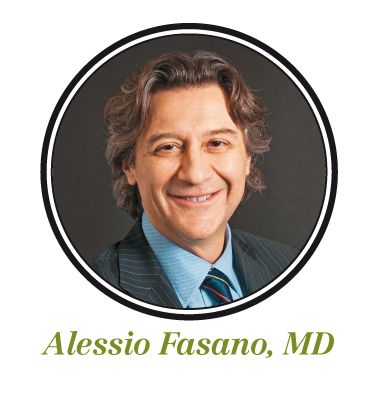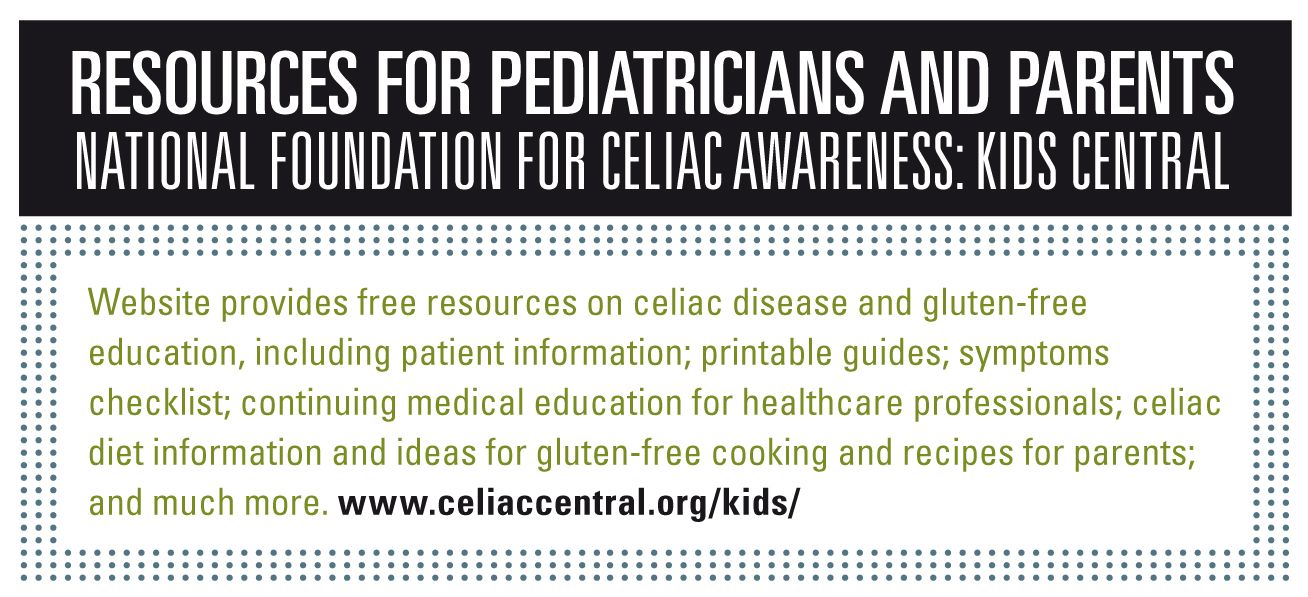Peds 5-2014 spec report
The primary challenge is to distinguish between celiac disease (CD) and wheat allergy, or the newest possibility, non-CD gluten sensitivity.
Originally, the main challenge with celiac disease (CD) was awareness, begins Alessio Fasano, MD, director of the Center for Celiac Research and Treatment, Boston, Massachusetts. Then, he says, the issue became that when someone said they had a problem with gluten, physicians assumed it was CD and considered nothing else. “Now we realize it’s much more than that.”

He says that now the primary challenge is the differential diagnosis and distinguishing between CD and wheat allergy, or the newest possibility about which relatively little is known, non-CD gluten sensitivity.
Although it is possible to have CD and have no symptoms whatsoever, Fasano says that the most common way that children with CD present to their pediatricians is with anemia and fatigue. However, the more classic symptoms-distended belly, abdominal pain, stunted growth, failure to thrive or weight loss, joint pain, diarrhea, constipation, and vomiting-still apply. Other possible symptoms include a skin rash (dermatitis herpetiformis); discoloration of the teeth or other enamel defects; and osteoporosis or osteopenia. He says that it raises a red flag in his mind when, for example, “kids come in our clinics with unexplained fractures that are not proportionate to the trauma they received.”
Serum testing for CD
What is the first thing you should do if you suspect a child has a problem with gluten? Fasano emphatically states, “I can tell you immediately what not to do.” He explains that the child should not be placed on a gluten-free diet. He says that many pediatricians face the dilemma of the family having already placed the child on a gluten-free diet before coming to the office, and that “really jeopardizes our ability to make the proper diagnosis.”
He says that the first step with most children is to perform a serum test for immunoglobulin A (IgA) anti-tissue transglutaminase (anti-tTg) antibodies. “It is simple, extremely reliable, and extremely cost effective,” he comments.
Fasano explains that if this screening test is positive, the child should be referred to a gastroenterologist for an endoscopy with biopsy to confirm the diagnosis. If the test is negative, the likelihood that the child has CD is low, but not nonexistent because “10%, roughly, will test falsely negative,” he says.
Is it in the genes?
“The best next step,” Fasano says, “is to establish if the genes that must be there for it to be celiac disease are present.” The genes he refers to are HLA DQ2 and DQ8. He comments that it is almost impossible to have CD without one or both of these genes. However, “roughly one-third of the general population has either or both of these genes and does not develop CD, so doing this test is not to confirm the diagnosis, but rather to rule it out.”
Fasano says that if this test is positive and gastrointestinal symptoms are present, then the child should be referred to a gastroenterologist for endoscopy, not only to rule CD in or out, but also to look for other possible gastrointestinal causes of the child’s symptoms.
Test for wheat allergy
If the test is negative, he suggests reassuring the family that the child almost certainly does not have CD and referring the child to an allergist to rule wheat allergy in or out.
If the child tests negative for a wheat allergy, then it is time to consider non-CD gluten sensitivity, says Fasano. Unfortunately, he continues, “The only way to make the diagnosis of gluten sensitivity is by exclusion criteria.”
The gluten challenge
Fasano outlines: If a child presents with symptoms that could be associated with gluten, and the family indicates that the symptoms seem to worsen with gluten exposure, and CD, wheat allergy, and any other likely causes for the symptoms have been ruled out, “then and only then is it worth it to do a brief challenge.” He explains that the challenge should consist of placing the child on a brief (ie, 3 to 4 weeks) gluten-free diet to see if the symptoms subside. At the end of the month, the child should be reexposed to gluten to see if the symptoms return. If they do, the child most likely has non-CD gluten sensitivity.
Fasano takes issue with the way people have muddied the gluten landscape. He says that many people think that gluten is “wrong”; that “it’s bad for everybody”; and that every gastrointestinal symptom merits going gluten-free. Those people are “vilifying what is a superb treatment tool,” he says.

“For people with CD, a gluten-free diet is like insulin for diabetics,” he continues, “Because of the relaxed way that many people embrace the diet without much indication, there is the sense that this is a fad diet that is here and will go away sooner or later.”
To help correct all the misconceptions, Fasano has just published a book, titled Gluten Freedom: The Nation’s Leading Expert Offers the Essential Guide to a Healthy, Gluten-Free Lifestyle(Wiley, 2014). He says, “We’ve gone from pediatricians never seeing a case of CD in their practice to being overwhelmed by people who claim, rightly or wrongly, that their kids are suffering because of gluten.”
Fasano concludes, “As usual, common sense, evidence-based medicine is the way to go.”
RESOURCES FOR PEDIATRICIANS AND PARENTS
National Foundation for Celiac Awareness: Kids Central
Website provides free resources on celiac disease and gluten-free education, including patient information; printable guides; symptoms checklist; continuing medical education for healthcare professionals; celiac diet information and ideas for gluten-free cooking and recipes for parents; and much more.
Ms Hack is a medical writer and editor in New Jersey. She has 25 years’ experience in the field and is a long-time contributor to both Contemporary Pediatrics and sister publication Contemporary OB/GYN. She has nothing to disclose in regard to affiliations with or financial interests in any organizations that may have an interest in any part of this article.